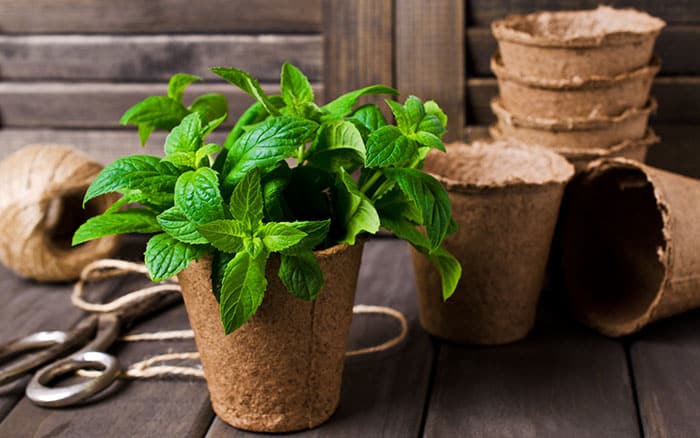Use your fresh garden produce to shake up your meals and add some flavour.
Growing your own herbs, fruit and vegetables will open up so many doors in the kitchen, so follow these recipes and get cracking with creating your own condiments.
Marvellous mint sauce
Mint grows so freely, that once you start your herb garden, you’ll never need to buy mint sauce again. So, you’ll always have your own supply of this classic complement your roast lamb.

It’s best to buy mint as a young plant in spring and to keep it planted in a container filled with multi-purpose compost with easy access so you can collect the leaves. As it is a vigorous plant, if mint is planted into the ground, it will spread, so keep control of it in a container.
Picking mint regularly will keep your plant compact and encourage new growth of new shoots.
It is best used fresh but if you don’t have an immediate use for it, chop it into pieces and place it in an ice cube tray filled with water and freeze the mint. Then, as and when it’s needed you can add it to the pan.

Hungry for horseradish
This sauce is most commonly eaten with beef, but it’s also a great addition for a spicy take on a potato salad or added to scrambled or poached eggs with salsa.
Growing horseradish to make your own fiery sauce couldn’t be easier as they are tough, low maintenance crops.
Get started by planting the thong, a piece of the root, in a pot in a sunny or partially shaded spot around March or April. Ensure that the plants are well watered during growing season and give them a boost in summer with a liquid fertiliser.

To harvest in autumn, upturn the pot and remove approximately half of the thinner white roots and replant the rest into fresh compost to continue growing.

Feeling hot, hot, hot
If you like it hot, a chilli sauce might be just what you need to accompany your meal to give it a kick.

You can sow the seeds in a container indoors from late winter until the middle of spring. Most of the seeds will germinate, and quicker so if they are in a heated propagator.
Once germinated, place the pot on a light windowsill and shortly after, when they are 1 inch tall, move each of the seedlings into their own pot.
In late May the plant will be ready to go outside, as it has dodged the danger of frost. Plant them directly into the ground, into a larger pot with space to grow or into a growbag.
Come July, your chilli peppers should be ready to harvest. Once the fruit is picked, the plant will put its energy into producing more fruit.

Not only will these sauces be sensational, but you will also experience the joy of growing the crops yourself and making them into something else tasty.

Leave A Comment